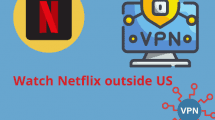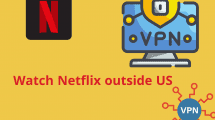With cyber threats constantly evolving, adequately protecting devices, networks and data has become an essential priority for individuals and organizations alike. Whether you simply want to safeguard online privacy at home or shield enterprise systems from sophisticated attacks, understanding basic cybersecurity and implementation best practices is key.
This introductory guide examines common risks plus available safeguards across three domains – personal digital security, workplace IT protections and defensive infrastructure for technology makers. Follow these proactive tips appropriate to your needs for managing threats in today’s interconnected world.
Securing Personal Devices and Online Presence
Even non-technical professionals require basic cybersecurity savvy nowadays to navigate routine risks like online scams, data theft and identity fraud. Let’s explore key measures securing your personal digital presence:
Guard Account Credentials
Use strong unique passwords with 2-factor authentication everywhere possible. Password manager apps also help create and store robust credentials securely. Enable account activity notifications to spot unauthorized access attempts.
Know the Privacy Settings
Configure social media profiles and device/app permissions conservatively, only enabling geo-tracking, microphone etc. selectively. Disable when not actively required.
Verify Links Are Legitimate
Hover over embedded links in emails, messages and unfamiliar websites to preview actual URLs before clicking. Visit sites directly if unsure rather than clicking provided redirects.
Install Reputable Anti-Virus Software
Protect all computers and mobiles with leading anti-virus programs quarantining detected threats before they execute. Schedule regular system scans catching any residual malware undetected at first breach.
Think Before Oversharing Publicly
Avoid broadcasting travel plans publicly alerting cyber criminals timing home burglaries. Be wary sharing personal information like pet’s names commonly used for account security questions by fraudsters.
Backup Sensitive Data
Automate scheduled backups of important documents, photos etc on both personal devices and secured cloud repositories allowing recovery after malicious attacks or physical hardware failures.
Shielding Business IT Infrastructure
Maintaining robust cybersecurity is particularly critical for enterprise IT systems storing valuable customer data, intellectual property plus operational technology managing physical equipment/infrastructure.
Besides the personal device practices noted already, additional safeguards help harden company networks against intrusions:
Prioritize Staff Security Training
Many breaches originate from employee actions like opening phishing email links or sharing passwords negligently. Formalize expectations around responsible data handling through mandatory cybersecurity awareness training.
Install Network Firewalls
Firewalls provide the first line of automated defense preventing unauthorized network access either inbound or outbound by filtering traffic against defined policies. Maintenance ensures detection profiles stay current as new threats emerge.
Endpoint Protection Across Company Hardware
Extend anti-virus, malware prevention and device access management uniformly across endpoint infrastructure including employee workstations, servers, mobiles, tablets etc through centralized administration dashboards.
Deploy Intrusion Detection Systems
Network IDS actively sniff traffic detecting potential exploit patterns suggesting an active attack is underway. This triggers alerts to investigate and contain threats minimizing damage/theft.
Develop Incident Response Plans
Document cybersecurity incident response plans with defined responsibilities across IT, public relations, legal etc spelling out internal/external communication protocols. This allows rapidly containing breaches through orderly coordinated reaction.
Control Access Privileges
Restrict employee access privileges only to specific data/systems required for assigned roles rather than allowing all staff universal rights by default. This limits exposure scope if any individual account gets compromised internally.
Arrange Vulnerability Assessments
Schedule periodic simulations where external consultants attempt to penetrate systems and physical premises testing how effectively existing measures deter different malicious techniques. This identifies security gaps for corrective action.
Building Resilient Software Systems and Devices
Finally software developers and hardware device makers also carry responsibility enacting sufficient defensive measures protecting technology consumer safety and privacy during use.
Secure Design Principles
Build solutions incorporating secure coding best practices for encryption, input validation and threat detection according to industry standards right from initial architecture rather than retrofitting protection later.
Risk Assessments Prior to Deployment
Formally evaluate project plans through pre-launch risk analysis exploring potential misuse scenarios from various malicious actors and insiders. This steers design of countermeasures preventing foreseeable attacks.
Continuous Testing Throughout Product Life Cycle
Expand testing protocols beyond core functionality. Rigorously simulate malware infections, denial-of-service attacks and unauthorized access techniques at each product iteration from pilot releases onwards.
Monitoring for Emerging Threat Intelligence
Stay updated on tactics of criminal hackers and malicious nation state groups by monitoring alerts from industry sources like US CISA. Rapidly roll out software fixes or device firmware updates quashing newly observed vectors compromising solution integrity.
Incident Response Task Force
Retain dedicated incident response teams to quickly address emerging threats identified post-deployment through user reports or transaction monitoring tools. Flaws get diagnosed, contained and patched faster by assigned staff versus fragmented efforts.
Key Takeaways for Boosting Cyber Resilience
The increasing integration of technology across all areas of society unavoidably expands vulnerabilities requiring vigilant management. By taking a proactive approach securing personal, workplace and industrial digital assets as outlined here however, citizens and organizations can take greater ownership minimizing cyber disruption risks with resilient safeguards and response readiness.
While no solution represents an absolute guarantee against all possible attacks due to the ever-evolving nature of digital threats, dedicating focus towards sensible precautions tailored for regular individual and business usage brings tremendous protective value.
Through widespread adoption of core preventative habits and safety-conscious engineering, we can collaboratively enhance cybersecurity – creating a digitally integrated world safer for human creativity and convenience to continue thriving.
Answering Common Cybersecurity Questions
Let’s wrap up by addressing some frequently asked infosec queries:
What is the biggest threat to most consumers and small businesses today? Ransomware now causes the most financially destructive attacks against regular end-users through massive encryption of files combined with ransom payment demands to supposedly decrypt everything. Backups are the best protection if infected.
Where do the most advanced cyber threats originate? Nation-sponsored hackers create increasing dangers for political or economic espionage. However, most fraud against consumers still stems from traditional cyber criminals chasing profits.
What emerging technologies carry new risks? IoT smart home/city devices, crypto assets like NFTs and extended reality ecosystems introduce fresh attack surfaces. Their relative immaturity means protections lag behind sophistication of threats targeting such novel tech
How can average users assess cyber risks for new devices and digital platforms? Search “[product name] + well-known expert site” like Consumer Reports or CNET to find trustworthy reviews assessing cyber protections and privacy concerns before purchase and onboarding.































Add Comment